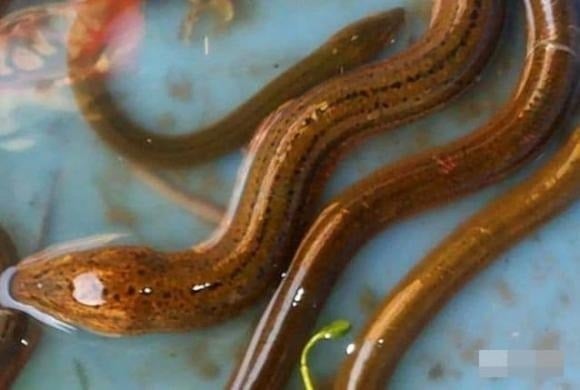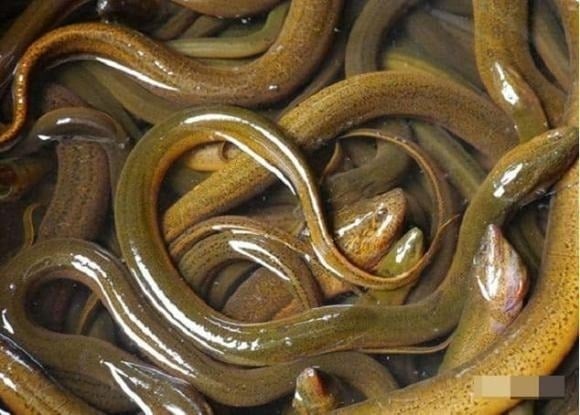In folk proverbs such as “Summer’s tonic, the first is the field eel” or “Light summer, eel is as good as ginseng,” eels are considered a nutritious and healthy food.
However, there is also a saying, “Even if you’re poor, don’t eat the yellow eel,” implying that not all eels are safe to eat. Among them, the “moon-gazing” eel is a type to be avoided.
So, what is a “moon-gazing eel,” and why is it considered dangerous? Let’s delve deeper into this unique eel!
What is a “moon-gazing eel,” and does this type of eel truly exist?
According to folk legends, a “moon-gazing eel” is a field eel of larger size compared to regular pond eels, possessing two distinctive characteristics. Firstly, they have a penchant for feeding on dead animal carcasses, such as those of dogs or cats found in fields. Secondly, they tend to appear during full moon nights, craning their heads to gaze at the moon, hence the moniker “moon-gazing eel.”
Due to these tales, many believe that moon-gazing eels are unfit for consumption. In some regions, it is even thought that this type of eel is poisonous, and consuming it could lead to poisoning or even death.
So, do “moon-gazing eels” truly exist? If so, how can we identify and avoid their potential dangers? Historical records trace the concept of moon-gazing eels back to the Ming Dynasty in China, where a story is told of a young man who consumed such an eel and subsequently died from poisoning. Since then, folk beliefs have perpetuated the idea that moon-gazing eels are highly toxic.

However, these are merely legends, and there is no concrete evidence to support the notion that field eels are poisonous. In Vietnam, consuming field eels has been a long-standing tradition, spanning from the South to the North, and no cases of poisoning or fatalities have been reported after eating eels.
In reality, when catching eels, you may observe them lifting their heads above the water surface. This typically occurs when the water is polluted or lacks oxygen, forcing the eels to surface for air.
Field eels are primarily nocturnal, especially active during bright moonlit nights, making them easier to catch when they venture out in search of food.
While elderly folks in rural areas may believe that larger eels, referred to as “moon-gazing eels,” are less tasty, most of these stories are rooted in folklore and lack scientific basis.
Why should we refrain from eating “moon-gazing eels”?
In folk belief, moon-gazing eels are thought to feed on rotten animal carcasses, a dietary habit common among field eels. Eels are carnivorous, rather aggressive, and have a varied diet that includes small fish, shrimp, frogs, birds, and even snakes. When food is scarce, eels will not hesitate to feed on dead animals like dogs or cats.
Larger eels are more likely to consume these types of food, and as a result, they may harbor more bacteria and parasites, making them unsafe for human consumption.

Secondly, larger eels are believed to have higher toxicity. While the toxin is not present in the meat but mainly in the eel’s blood, the toxicity increases with the size of the eel. Compared to smaller eels, thoroughly cooking and removing all the internal organs and blood from larger eels becomes more challenging. Inadequate cooking significantly increases the risk of poisoning.
The Ancient Wisdom: Why ‘Let the Birds Fly Past and the Fish Jump Shore’ is a Wise Philosophy
In the realm of ancient wisdom, there is a profound caution against complacency: “Beware when birds fall from the sky and fish leap at the shore.” This cryptic warning holds a deeper meaning, alluding to the dangers of becoming too comfortable or complacent, for it is when we let our guards down that fate can surprise us with unforeseen challenges.






































